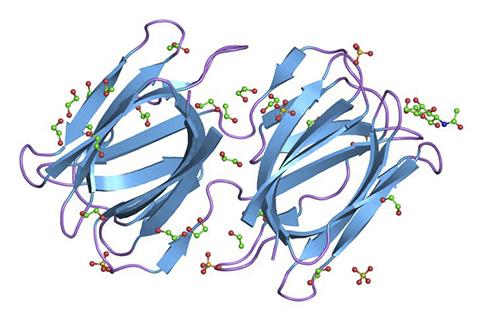According to a study in Plant Biotechnology Journal, genetically modified rice could be an inexpensive production platform for microbicides that inhibit HIV entry into target cells. Such a method could be one sustainable option for poverty-stricken countries with high rates of AIDS.
The Joint United Nations Programme on HIV/AIDS estimates that the global HIV-positive population totaled 36.7 million in 2016 with 1.8 million new cases, while roughly 22 million people had not accessed or had no access to treatment. The World Health Organization further indicates that more than 70 percent of the global HIV-positive population resides in sub-Saharan Africa, where one in 25 adults is infected.
Preventatives or pre-exposure prophylaxis (PrEP) such as microbicides, however, have the potential to help control the epidemic.
Microbicides come in various forms, such as topically applied gels and creams, along with rings that are applied before sexual activity—products with private uses that can be controlled by women, which is vital in sub-Saharan regions where women are at an elevated risk of HIV and account for more than half of all new infections. There is a 30–60-minute window following HIV exposure before infection takes place, and PrEP with microbicides could potentially block the infection.
Unfortunately, many microbicides are experimental and need further study. Most that have been tested so far have shown only limited ability to prevent infections, which underscores the need for an inexpensive, effective treatment.
In an attempt to address that need, the National Cancer Institute Molecular Targets Laboratory, along with collaborators around the world, has completed a string of studies to produce biological proteins—including possible microbicides—in plants. Working with the University of Lleida-Agrotecnio Center in Spain and the University of Natural Resources and Life Sciences in Austria, scientists conducted the first attempt to produce an inhibitory HIV protein in rice seeds.
The goal is to “make active microbicides at pennies a dose,” said Barry O’Keefe, Ph.D., chief, Natural Products Branch, Developmental Therapeutics Program, Division of Cancer Treatment and Diagnosis, and deputy chief, Molecular Targets Laboratory, Center for Cancer Research.
To explore potentially inexpensive microbicides, the study’s authors turned to griffithsin, a protein that is found in red algae and was first isolated in the Molecular Targets Laboratory. Griffithsin binds to the sugars coating the outside of HIV virions, preventing them from fusing to human cells. Griffithsin is also a long-lasting protein, meaning it may provide a “forgiveness period” even if a treatment is missed, said O’Keefe.
Under natural circumstances, only a small amount of the protein can be isolated from the algae. Other methods of production, such as in Nicotiana benthamiana plants—a relative of tobacco—and Escherichia coli bacteria, require considerable scientific infrastructure. While N. benthamiana plants provide a greater yield of griffithsin than E. coli, they must be processed quickly before the plant wilts and also produce toxic alkaloids, such as nicotine, which must be removed, resulting in additional purification steps and costs.
But according to the Plant Biotechnology Journal study, cereal crops may be an alternative, cost-effective solution: rice endosperm provides a potential instrument for producing recombinant griffithsin. Rice offers an advantageous production platform because it can be stored indefinitely when dried, doesn’t have to be processed immediately, and requires minimal processing, thus reducing manufacturing costs.
Additionally, multiple scientists in Europe, Asia, and the Americas have proposed that rice seed griffithsin can be purified through a cost-effective one-step process because rice is on multiple regulatory agencies’ Generally Regarded Recognized as Safe lists, databases of food products and additives that experts in the international scientific community have determined to be safe for human consumption.
To ensure that no possible accidental release of viable seeds could take place, all the rice crops for the study were grown in a greenhouse in Spain, and no viable seeds entered the United States. The Molecular Targets Laboratory received and analyzed only protein extract samples from the rice seeds, to ensure griffithsin was being properly produced.
The study estimated that 1.8 kilograms per hectare of pure griffithsin could be produced from rice seeds. O’Keefe suggested that one kilogram of rice could yield between 100 and 1,000 doses of the microbicide. There are continued efforts to increase the yield by altering the rice plant and modifying the purification process.
“There are still many areas for improvement,” O’Keefe said, but “this was the first study showing griffithsin can be produced in rice.”


